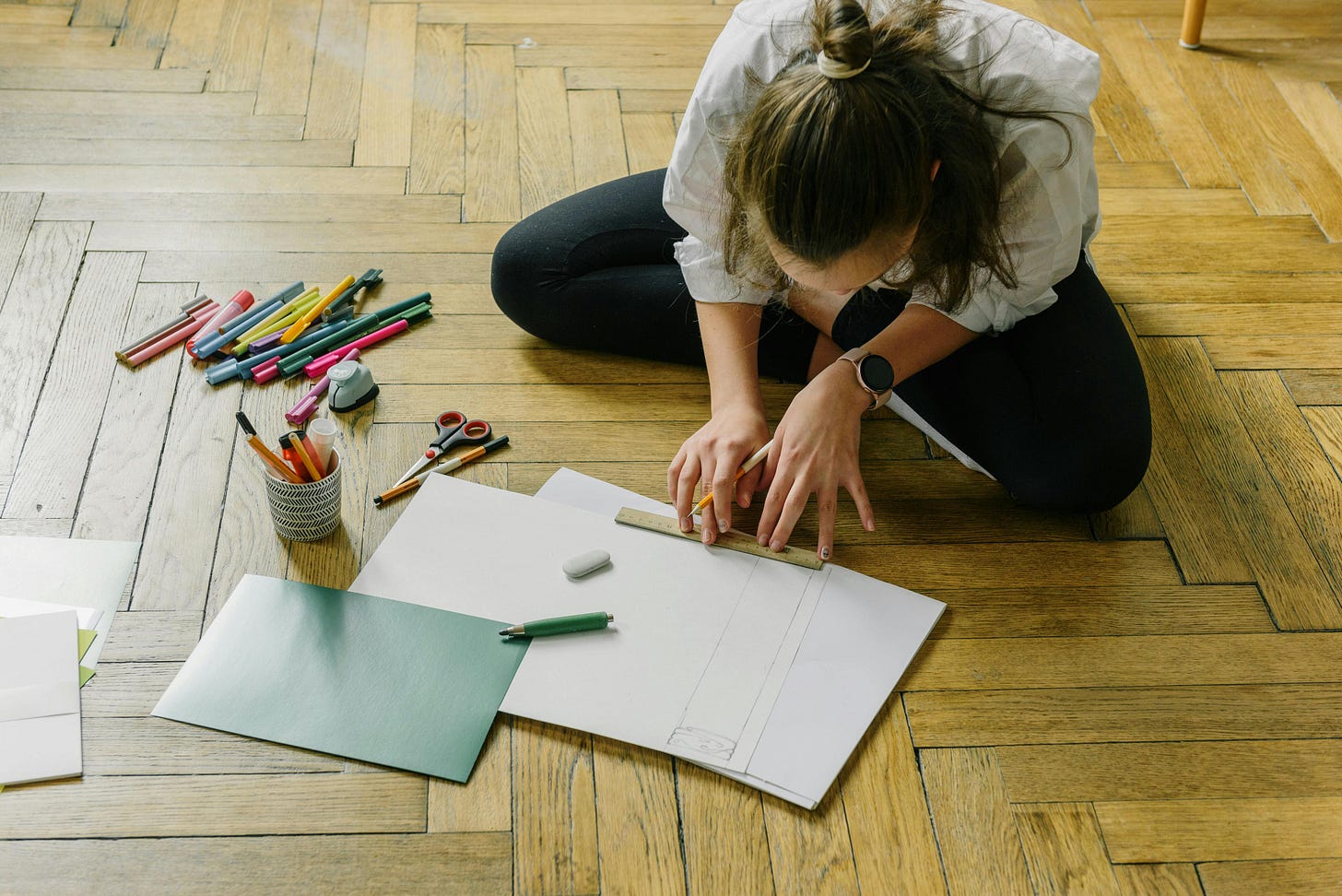It’s July, my favourite month of year, the evenings are lighter and the days are sunnier. January is a common time for changes to happen (though as we know, some of those changes don’t see February! 👀). This year I decided to embark on some changes in June; the summer felt hopeful for me! ☀️
It got me thinking about the ingredients that go into our decisions to change, and how do we know if we are ready?
The truth is, readiness for change isn’t a straightforward yes or no. It’s a quietly complicated, often confusing dance. One moment you want to leap forward, the next you hesitate, retreat, or even question your own desires. I’ve been there myself, and I know how perplexing it can be.
Let’s explore this together…
The 5 Stages of Change:
Change isn’t a race or a box to tick. It’s more like a winding country lane - uneven, sometimes muddy, with unexpected pauses to admire the view or catch your breath.
1. Precontemplation — The Quiet Pause
You might not see a need to change yet, or you might be avoiding it for now. This is a stage of protection — your mind’s way of keeping you safe when the idea of change feels overwhelming.
How it feels: You might be dismissive or unaware of the need for change. Or perhaps you’re just not ready to face what’s beneath the surface.
What’s beautiful here: This pause holds space for you to gather strength, process feelings, or simply catch your breath. There is kindness in giving yourself permission to rest.
2. Contemplation — Sitting with Ambivalence
Here you’re aware that something could be different, but you’re unsure if you want it — or if it’s safe to try.
How it feels: Pulling two ways at once — hope and fear, desire and hesitation. You might find yourself weighing pros and cons endlessly.
What’s healing here: Sitting with uncertainty is a courageous act. It’s your inner wisdom quietly telling you that change deserves thought and respect, not pressure or rush.

3. Preparation — Testing the Waters
You’re gathering your resources, thinking about small steps, and starting to plan.
How it feels: Excitement mixed with nerves. You might try little experiments or book a first session, but the path ahead still feels a bit daunting.
What’s encouraging here: Preparation is where hope begins to take root, even if the soil feels rocky. Small steps count more than you realise.
4. Action — Taking Brave Steps
You’re actively making changes, whether that’s attending therapy, changing habits, or shifting thoughts.
How it feels: This is hard work — sometimes exhilarating, sometimes exhausting, and often a little scary.
What’s important here: Being gentle with yourself through slips and stumbles is just as vital as taking steps forward. It’s not about perfection, but persistence.
5. Maintenance — Settling into New Rhythms
You’re working to sustain your changes and build resilience against setbacks.
How it feels: More confident, but still human. Occasional doubts and slip-ups are normal.
What’s sustaining here: This stage is about self-compassion and patience — recognising that change is a lifelong dance.
Is Staying the Same an Act of Self-Compassion?
Yes it can be. Does this surprise you?
It’s easy to feel frustrated with yourself for “not being ready,” but often, that “not ready” is your internal system working to protect you. It might mean:
You’re keeping life manageable for yourself, not adding extra onto your plate.
You need more time to process feelings that change might stir up.
You’re holding onto familiar ways of coping, as any alternative doesn’t feel safe.
You’re giving yourself time and space, not rushing into action.
You’re honouring a rhythm that isn’t dictated by pressure or external expectations.
Recognising this isn’t about giving up — it’s about listening to yourself with kindness, and trusting that your readiness will come when it’s right.
The Confusing Dance of Readiness: Why We Want Change and Then Don’t Take Action
You might wonder: why do we sometimes want to change and then freeze up?
Because readiness isn’t just about motivation. It’s tied up with emotional safety, timing, trust in yourself, and the courage to face uncertainty.
It’s perfectly normal to wobble between wanting and not wanting change. Sometimes part of you says “go,” but another part of you whispers “not yet.”
The key is to sit with that ambivalence without judgement. It’s a vital part of building self-trust and sustainable change.
How to Check In With Yourself — Without Pressure
Here are two gentle ways to explore where you are:
1. The Readiness Ruler
On a scale from 0 (not ready at all) to 10 (completely ready), where do you feel you are today?
If your number is low, ask yourself:
What’s already making it more than zero?
What might help me feel a little more ready?
What am I protecting by staying where I am?
If your number is higher, ask:
What’s supporting me?
What’s still holding me back?
What small step feels possible now?
2. Pros and Cons Reflection
Write down the benefits and challenges of changing — and the benefits and challenges of staying the same.
This exercise isn’t about deciding “right now,” but about listening carefully to your own perspective.
What Next?
Holding space for yourself at every stage.
Not ready? Honour that. Reflect, rest, and be curious without pressure.
Unsure? Sit with your doubts, they are part of growth.
Planning? Try one gentle step, no need to leap.
Acting? Celebrate small wins and treat yourself kindly when it’s tough.
Maintaining? Keep building self-compassion and patience. Change is ongoing.
Final Thoughts:
There’s no rush. No perfect moment. Change happens when it’s ready for you, and often in its own good time.
So if you feel stuck or “not ready,” be gentle.
If you are ready, I’m rooting for you! 🤗
For your next quiet moment:
Where am I on this journey right now?
What’s true for me about staying where I am?
What might a gentle next step look like?
How can I hold myself with patience and compassion today?
Community Q:
Have you ever been surprised by the benefits of staying the same?





